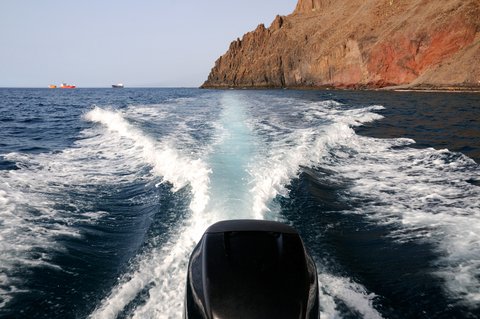Outboard engines are the lifeblood of boating anglers because of their cost, weight and space savings. Over the years, the reliability of outboards has increased exponentially and most owners can get up to 3,000-4,000 hours if proper care is taken.
Engine maintenance is the best way to prevent breakdowns and ultimately prolong the life of any outboard engine. Here are four important things to keep in mind.
ALSO READ: DIY Tips for Bottom Painting Your Boat
Type of Outboards
There are two types of outboards on the market being 2-strokes and 4-strokes. The 2-stroke variety will lubricate within the fuel-oil mixture, while 4-strokes lubricate vital engine parts from oil pumped through engine passages similar to an automobile engine.
Although the technology of 2-strokes has increased dramatically (Evinrude Etec), 4-stroke engines are becoming the mainstay of the industry due to a variety of factors (fuel efficiency, reliability, etc).
Maintenance Counts
The marine environment presents the toughest, most challenging conditions for boat and engine components. The corrosive properties of the saltwater cut down on the life of most engine, steering and boat components. Maintenance and care is critical for staving off the effects of the brine.
First, always follow your recommended maintenance and service intervals as these were developed by the mechanical engineers that designed the engines. There are obvious periodic maintenance items that must be performed (water pumps, gear oil, anodes, etc), but doing a few extras will go along way.
Beating the Saltwater Nemesis
Flushing the engine’s cooling passages after each use is paramount to longer engine life. Engine flushing immediately after usage doesn’t allow salt deposits to build which can cause cooling and corrosion issues. In addition if the engine was ran in skinny water, flushing will help to remove any silt or sand inadvertently sucked up.
The optimal way to flush an outboard is by using ear muffs or in a freshwater tub as a running engine keeps the thermostats open allowing for a complete engine flush. But for in-water boats this can be a problem, so most newer engines have a quick flush hose hookup for flushing.
Unfortunately some saltwater water is trapped as the cold hose water reaches and closes the thermostats. One way to help combat this is to use a 50-to-100 foot black hose for flushing and cleaning. By leaving the black hose on the dock while out will allow the water to heat up inside the hose and it can reach temperatures over 120F. This will provide enough heated freshwater to get through the thermostats before they close allowing for a more complete flush.
Keeping Your Steering in Check
Most boats will either have cable or hydraulic steering with hydraulic steering costing a bit more but will last much longer. Engines that have their trim, tilt, and steering shaft well-lubricated will reduce wear and tear on the steering systems. Most engines will have grease points which need to be greased at least once a season as per manufacturer, but it is beneficial to grease these at the start, mid, and end of the season.
In addition hydraulic steering owners can go above and beyond by spraying the steering off after each trip and wiping the hydraulic ram with steering fluid. This will help prevent “pitting of the ram” which is the main cause of failure in these systems.
Remember, doing a little maintenance will go a long way in terms of boating or fishing in saltwater. Because owning a boat is not a cheap hobby, the more preventative maintenance that is performed will ultimately save you bucks in the end.
© Luciano De La Rosa | Dreamstime.com – Sailing the blue sea on a boat outboard








